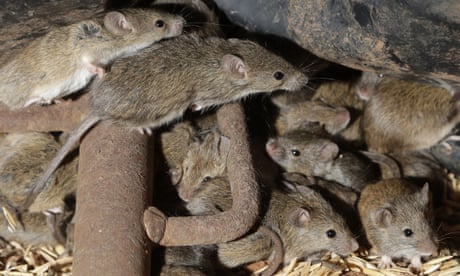- by foxnews
- 04 Apr 2025
CSIRO recommends double-strength mouse baits after report finds dose used to protect crops ineffective
CSIRO recommends double-strength mouse baits after report finds dose used to protect crops ineffective
- by theguardian
- 03 Aug 2022
- in news

The wrong chemical dosage has been used to protect crops against mice as they exhibit lower sensitivity to zinc phosphide than previously thought, new research shows.
The plague wreaked havoc on agricultural activity and mental health in regional New South Wales and Queensland for more than 10 months, and the effects are still being seen in Western Australia, where mouse numbers remain high.
Zinc phosphide-coated wheat bait is the only registered in-crop rodenticide in Australia, and has previously been approved for use in a concentration of 25g/kg of active zinc phosphide per wheat grain.
The new research is the first laboratory-based mouse bait efficacy study in Australia since the chemical was registered for agricultural use about 20 years ago.
Henry said the 25g dose can work well in instances where there is not much other food around to distract mice, and they can quickly find two or three grains of the bait, which is enough to get a lethal dose.
The initial research prompted emergency permits to be issued during the height of the plague, allowing bait producers to double the toxicity of their products from 25g/kg to 50g/kg.
Since then, CSIRO researchers have conducted a series of studies to reassess the sensitivity of mice to zinc phosphide in the laboratory, as well as the effectiveness of a new bait formulation in the field.
He said there is little chance of native wildlife being directly poisoned by zinc phosphide because there are very few or no other mammals that live in the relevant paddocks.
Henry believed any incidents of animal death during the mouse plague were likely caused by different kind of mouse bait to zinc phosphide.
- by foxnews
- descember 09, 2016
'I traveled for an entire year for free - and saved $15K'
Hailey Learmonth explored Australia without paying rent, thanks to pet sitting. She saved $15,000, lived on farms, and embraced remote work to travel on a budget.
read more


